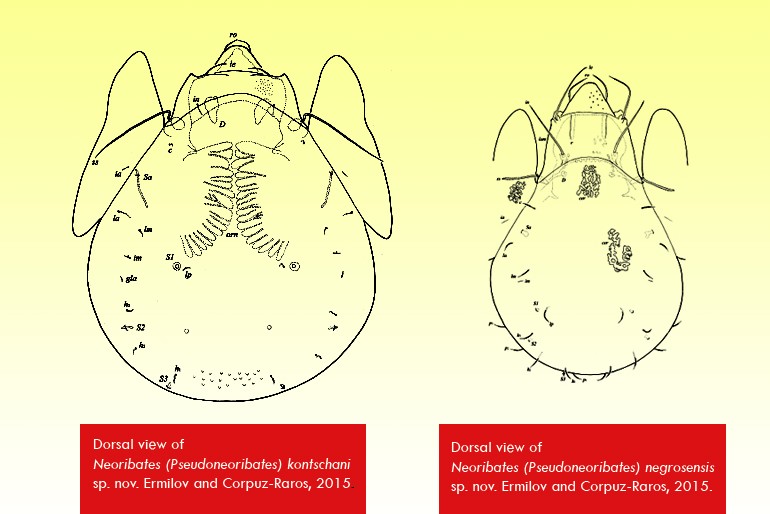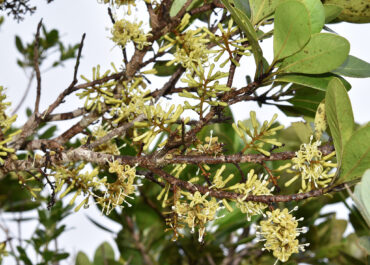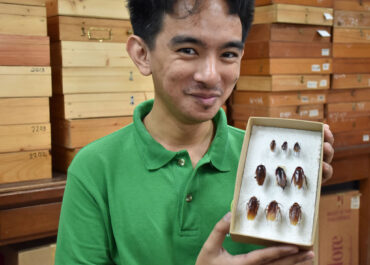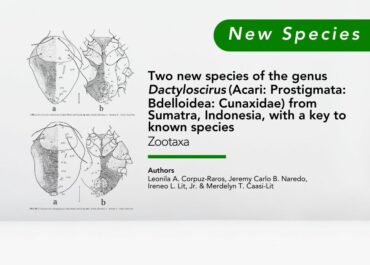New mite species discovered in the Philippines

Two new species of soil mites belonging to a new subgenus of the oribatid family Parakalummidae were discovered in the Philippines by Sergey V. Ermilov of Tyumen State University, Russia, and Leonila Corpuz-Raros of UPLB Museum of Natural History.
Their study is part of the global effort to document the earth’s biodiversity towards conservation and enhancement of the remaining biotic resources. They published the article “A new subgenus and two new species of oribatid mites of the genus Neoribates (Acari, Oribatida, Parakalummidae) from the Philippines” under Zootaxa, Volume 3956, No 2.
The researchers reported that the newly discovered mites are so morphologically different from all previously known species of the family Parakalummidae which lead to the discovery of the new subgenus, Neoribates (Psedoneoribates), under the genus Neoribates.
Under this subgenus, two species were described and named – Neoribates (Pseudoneoribates) negrosensis and Neoribates (Pseudoneoribates) kontschani. These new taxa represent the first Philippine record of the family Parakalummidae which was only previously known to occur in the Oriental Region of Sri Lanka and Vietnam.
Neoribates (Pseudoneoribates) negrosensis was found in Negros Island and Siniloan, Laguna, thus its specific name negrosensis. It is relatively big with body size of 713-830 x 514-564 micrometers with dark brown color, and thick body outer layers of ceretegument with five pairs of genital setae. Moreover, it has 10 long and distinct pairs of notogastral setae and the orientation is slanted towards the anal plates (apoanal). This species is terrestrial and inhabits forest swamp litter that remains moist even during the dry season.
On the other hand, Neoribates (Pseudoneoribates) kontschani was found in the Agusan Marsh Wildlife Sanctuary in Mindanao Island. It is a bit smaller than the first species with a 514-564 x 431 micrometers body size with light brown color. It has only 4 pairs of genital setae. Like the first species, this species has 10 pairs of notogastral setae but the hairs are not visible externally. Its presence is indicated only by the hardened rings on the soft cuticle on which the setae are borne. Its setae orientation is aligned along and close to the anal plates (paraanal). This species is more aquatic and can be found in swamp forests. It was named after Dr. Jeno Kontschan for his extensive contribution on Uropodina mites of the world.
Like other oribatida, these new species form part of the soil microfauna. These are important in the nutrient cycle on the soil because of their role in comminution or the breaking down of organic debris to sizes suitable for chemical action by microbial agents of decomposition which then disperses in the soil subsystem.
Knowledge on oribatid taxonomy therefore provides part of the database needed for managing the soil towards environment-friendly crop production systems.
Search
Archives
Categories
- Announcement (21)
- Feature (21)
- News (141)
- Press Release (55)
- Research (4)
- Services (3)



